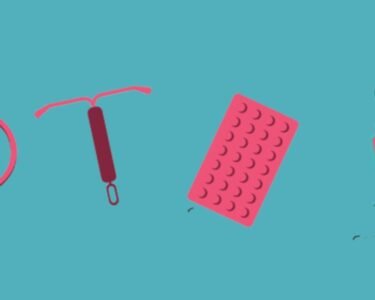When you first start a weight-loss journey, the results can come surprisingly quickly. You change your diet and increase activity, and the scale starts to move. Healthline notes that shedding 1-2 pounds a week ensures that your weight loss regimen is healthy, safe, and effective. For most people, reducing the calorie intake by 500 calories is enough to achieve the desired outcomes.
However, the road to fitness is seldom linear. Many weight watchers report that progress often slows down or even stalls after some weeks or months. This frustrating stage represents a weight-loss plateau. Plateaus happen due to a combination of lifestyle habits, metabolic adaptation, stress, and even unnoticed overeating.
The fear of the scales remaining unchanged despite your utmost efforts can be daunting. The good news is that overcoming a plateau is doable. In this article, we will share some tips to help you move past the stall and continue working toward your goals.
Track What You Eat
According to Mayo Clinic, weight loss is all about calorie consumption. You will lose weight if you burn more calories than you consume, regardless of your diet. If you underestimate calorie intake, there is a good chance of hitting a plateau.
This condition usually happens when you don’t track what you eat. Even small extras like a splash of cream in coffee or a handful of snacks can add up over the week. Tracking raises awareness. It enables you to update your diet to tighten portion control or reduce calorie-dense extras, which is enough to move past the plateau.
You can start a food diary using an app or a notebook. Log every meal, snack, and drink you consume to stay honest and spot hidden calories. Paying attention to portion sizes is equally important. Consider measuring cups or a food scale for greater accuracy. Reevaluate liquid calories because they can sneak in. Pick nutrient-dense options to balance caloric intake.
Consider a New Workout Plan
Your body adapts to exercise over time, and this could be a surprise culprit when it comes to weight loss plateaus. If you’ve been doing the same cardio routine for months, your muscles become efficient and burn fewer calories with the same effort. The Conversation highlights the downsides of doing the same workouts every day.
The article also recommends changing the workout intensity to boost results. This can be done by increasing the demands of exercise or manipulating the recovery timeline. For example, if you normally walk briskly for 30 minutes, add intervals of jogging or use an incline. You may also reduce the breaks between sessions.
Incorporating strength training into your regimen is a good idea. Building muscle boosts resting metabolism, helping you burn more calories all day. You can switch to a different exercise to overcome the plateau. Try swimming, yoga, dancing, or HIIT (high-intensity interval training) instead of running to engage different muscle groups. Use progressive overload to challenge your body.
Build Defense Against Stress
Stress directly affects weight, causing the scales to become unbalanced. High stress levels elevate cortisol, a hormone that can increase appetite and promote fat storage. Even worse, stress may also trigger emotional eating or cravings for sugary, high-fat foods.
Fortunately, dealing with stress is simple for most people. Deep breathing, meditation, or yoga can lower daily stress levels. Supportive conversations with family or friends often lighten mental strain. Furthermore, it’s crucial to devise a practical strategy and anticipate potential setbacks. Some healthy weight watchers may actually require professional help to tackle stress.
Consulting a therapist or counselor is the traditional route, but you can consider connecting with a psychologist nurse practitioner. These professionals offer physical and psychosocial support, an ideal combination for someone struggling with weight loss issues. You can also discuss the possibility of medical issues causing a weight loss plateau with a nurse practitioner.
Baylor University notes that nurses specializing in this field can help patients suffering from anxiety, depression, and eating disorders. Getting the right advice can make you stronger and help you achieve the desired results with a positive and fresh approach.
Get Enough Sleep
Sleep often goes overlooked in weight-loss conversations, but not getting enough of it can contribute to plateaus. Lack of sleep alters hunger hormones. For example, ghrelin increases appetite, while the lack of leptin decreases the feeling of fullness. This makes you more prone to overeating.
According to WebMD, you may end up leaning on a latte to keep moving if you are short of sleep. Even worse, you may feel the urge to skip your workout, enjoy a big meal, and turn in late. The entire cascade of events pushes you towards weight gain. If you are already on a plateau, recovery becomes challenging.
Quality sleep of 7–9 hours each night is the best way to prevent plateaus. Create a bedtime routine by dimming lights, avoiding screens, and sticking to a consistent sleep schedule. Maintain a positive environment by keeping your room cool, quiet, and comfortable.
When you’re well-rested, your body handles stress better, workouts improve, and food cravings are reduced. Together, these factors help break through a plateau.
FAQs
How long does a plateau last in weight loss?
A weight-loss plateau can last anywhere from a few days to several weeks. The timeline depends on the individual’s metabolism, calorie balance, and lifestyle habits. The best ways to overcome it are consistent dietary adjustments and new workout strategies, which often require some patience.
Can a planned cheat day break a weight loss plateau?
Although it sounds surprising, a planned cheat day or higher-calorie meal can sometimes temporarily boost metabolism by resetting leptin levels. However, cheat days should be controlled and not turn into multiple days of overeating. You can try smaller calorie cycling by slightly raising intake once or twice a week. This approach works better than indulgent cheat days.
How often should I weigh myself?
Weighing yourself once or twice a week is usually enough for weight watchers. Daily weighing, on the other hand, can be discouraging because water retention and hormone fluctuations cause natural weight swings. Experts recommend tracking progress over weeks rather than days to get a clearer picture of actual fat loss.
Dealing with a weight-loss plateau can feel discouraging because you work so hard to shed the stubborn pounds. However, these phases are a part of the natural progression of losing weight. Rather than seeing a plateau as failure, treat it as feedback that your body needs a new challenge or a recalibration of habits. You will soon get back on track and achieve better results than you imagine.
Author Bio:
Dr. Melanie practices medicine and specializes in diabetic care. Writing is something she loves to do in her spare time, offering valuable advice and tips to readers who want to achieve optimal health. Her favorite niches are weight management, diabetic diet, and everyday wellness.



